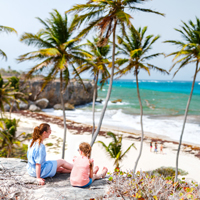Public transportation in Luanda is a vibrant and bustling system that is as diverse as the city itself. From the traditional blue and white taxis, known as Candongueiros, to the more modern bus system run by the Transporte Colectivo Urbano de Luanda (TCUL), there are a variety of options for getting around the city. There’s also the burgeoning train system, run by the Caminho de Ferro de Luanda (CFL), which offers a more comfortable and reliable mode of transport. For those who prefer a more active mode of transport, there are also a number of bike and pedestrian paths throughout the city.
Candongueiros
The Candongueiros, or blue and white taxis, are a common sight on the streets of Luanda. These shared taxis operate on fixed routes and are a cheap and efficient way to get around the city. However, they can be quite crowded and are not always the most comfortable option. Safety can also be a concern, especially at night or for women travelling alone. The cost of a ride is usually around 150 Angolan Kwanza (approximately 0.25 USD), making it an affordable option for most residents.
TCUL Buses
The TCUL bus system is a more modern and reliable form of public transport in Luanda. The buses are generally in good condition and the routes cover most parts of the city. However, like the Candongueiros, they can get quite crowded during peak hours. The cost of a bus ride is slightly higher than a taxi ride, at around 200 Angolan Kwanza (approximately 0.33 USD). The buses also operate on a fixed schedule, making them a more predictable option for daily commuting.
CFL Trains
The CFL train system is a relatively new addition to Luanda’s public transport network. The trains are modern and comfortable, offering a more relaxed mode of transport compared to the taxis and buses. The train routes connect Luanda with the surrounding provinces, making it a good option for longer journeys. The cost of a train ride varies depending on the distance travelled, but it is generally more expensive than the other forms of public transport. However, the comfort and reliability of the trains make them a popular choice for many residents.
Bike and Pedestrian Paths
For those who prefer a more active mode of transport, there are a number of bike and pedestrian paths throughout Luanda. These paths are generally well-maintained and offer a safe and enjoyable way to get around the city. However, the hot and humid climate can make this mode of transport less appealing for some people. Despite this, biking and walking are becoming increasingly popular in Luanda, especially among the younger population.
In conclusion, while owning a car can certainly make getting around Luanda easier, it is by no means necessary. The public transport system, while not perfect, is extensive and affordable. With a bit of patience and flexibility, it is entirely possible for an expat to live comfortably in Luanda without a car.

